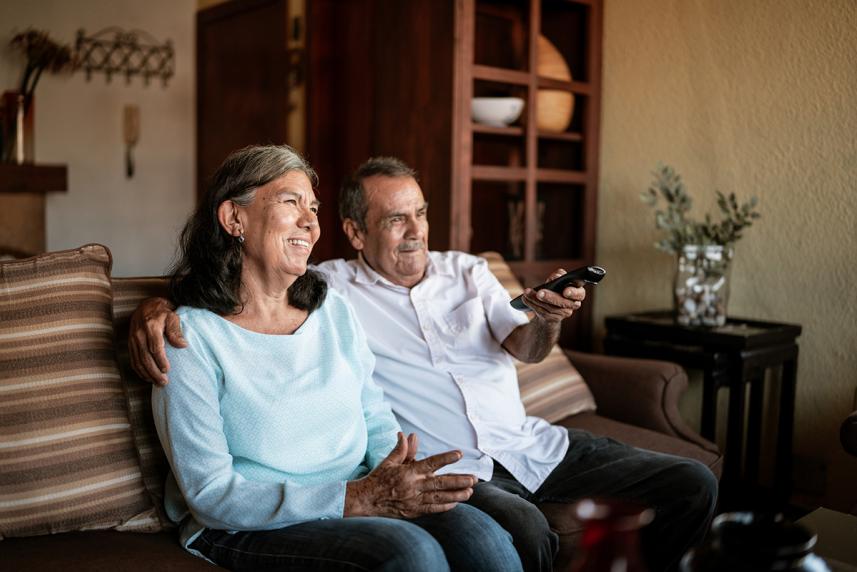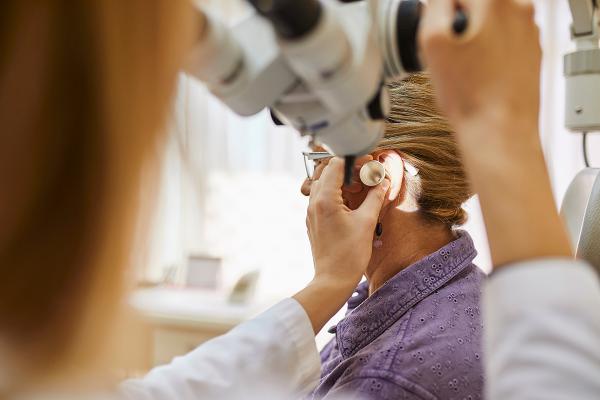5 cool hearing aid accessories that may make life easier
These nifty features might boost the performance of your hearing aids and help you hear more clearly too.

If you wear hearing aids, you already know how cool they are. Yes, they help improve your hearing. But they do so much more than that. They also help you spend quality time talking with friends and family. Or enjoy a concert or catch what people are saying during a meeting.
In short: Hearing aids may help give you your life back. But once in a while, you'll encounter a particularly challenging situation where you’ll need extra hearing help. That’s where these handy accessories come in.
What should I know about hearing aid accessories?
Today, there are a variety of hearing aid accessories that cut through the noise of everyday life. This helps you hear more clearly no matter where you are. But people don’t really use them very much, notes Dave Fabry, Ph.D. He’s the chief hearing health officer at Starkey. “Many people are not aware that some of these accessories exist,” he adds.
The first step is learning about these devices. One way to do that is by speaking to your hearing care professional.
They can help you choose accessories that fit your needs. They’ll ask you questions about your life and where you may need a boost. For example, do you go to a lot of social events? Do you spend a lot of time in meetings?
Ultimately, you’ll want accessories that are easy to use or help solve the issue that’s making it hard for you to hear. Here are five that are worth checking out.

UnitedHealthcare Hearing helps members access hearing exams, hearing aids and more. Sign in to learn more and check eligibility.
1. Remote microphone
The issue: It can be extra challenging to hear conversations in certain settings, says Kristina Petraitis, Au.D., senior audiology and education manager at Sonova USA. This includes:
- When there’s background noise: for example, at a restaurant or sporting event
- When you’re not sitting close to the person who’s speaking
- When the person who’s speaking isn’t facing you
Even with hearing aids, you may still struggle or need more effort to listen in these situations, says Petraitis.
The solution: A remote microphone that uses Bluetooth to transmit sounds into your hearing aid. This cuts down on the background noise that may make hearing conversations a bit tougher.
A remote microphone can be clipped onto the lapel of a shirt or jacket. Or it can be worn on a lanyard, like a necklace.
It’s often best for one-on-one settings. That way, the person you’re talking to can wear the device. It’s great for meetings, sitting in a crowded place or riding in a car with a friend or partner.
Remote microphones may also be helpful if you’re across the room at a presentation. You just need to make sure the speaker is holding the remote mic.
2. Table microphone
The issue: Going out for a meal with a large group is fun. But it can be hard to catch what everyone is saying when 2 or 3 people speak at once.
The solution: A table microphone is another option. This accessory is placed in the middle of the table. “The microphone automatically searches and amplifies the most dominant speaker at any point in time,” says Fabry. The speech is then streamed directly and wirelessly into your hearing aid.
This type of mic can be good for a noisy restaurant, work meeting or other social situations where you plan on staying seated — like a family gathering, for instance. “I’m a big fan of the table mic,” Fabry says. “It’s like having a third ear that enhances speech.”
3. TV streamer
The issue: You need to turn up the volume on the TV to hear every line of dialogue. “We can all relate to when a family member has the TV on very loud. It impacts the listening experience for everyone in the room,” says Petraitis.
The solution: A wireless TV streamer. It lets you stream audio directly from the TV to your hearing aid. “This allows you to keep the TV volume at a comfortable level for everyone watching,” says Petraitis. And because you can hear more clearly with this device, you can turn off the captions on the TV, she explains.
It works so well you may be able to go to another room without experiencing a break in the sound.
4. Remote control
The issue: You find it difficult to push the tiny volume control buttons on your hearing aid.
The solution: A remote control. It can be used to adjust the volume and change the settings on your hearing aid, as well as turn them on and off. You can carry the remote around with you. Many have options to lock them, so that you don’t accidentally press buttons while it’s in your pocket or bag.
They’re especially useful for people who aren’t interested in using a smartphone app, which also functions like a remote. Or maybe you have large fingers or another condition that makes it hard to operate those tiny buttons or a screen. In that case, a handheld remote may be a good option for you, notes Fabry.
5. The hearing aid’s app
The issue: Even if you can easily adjust the control buttons on your hearing aids, you may not want to.
The solution: If your hearing aids are Bluetooth-enabled (and many now are) they can be adjusted via their device’s smartphone app, says Petraitis. This companion app is included with the hearing aid. All you have to do is download it.
The app acts as an alternative to a handheld remote control, and it comes with more bells and whistles. “Using the device’s app is like having a free accessory,” Petraitis says. You can also download the app to your tablet if you prefer tablets to smartphones.
Apps can also be customized so you have a “personalized, unique listening situation at your fingertips,” she adds. For example, you might be able to:
- Stream music, the TV or a phone call directly into your hearing aid without getting an extra accessory
- Create a special program that helps you enjoy music even more when you go to a concert
And don’t worry if you’re not confident using an app. These are designed to meet you where you are. “If you’re able to use text messaging, you can typically learn to navigate a hearing aid app,” says Petraitis.
Need help understanding the features available to you or how to program the app? Talk to your hearing care professional. They can walk you through what you need to know. They want to make sure your hearing aids are making your life as rich and enjoyable as it can be.
Ready to request a hearing exam and consultation? UnitedHealthcare Hearing has a national network of hearing care professionals. Find a provider.
Information is for educational purposes only and is not a substitute for the advice of a licensed medical provider. Consult your provider prior to making changes to your lifestyle or health care routine.
Network size varies by market.


